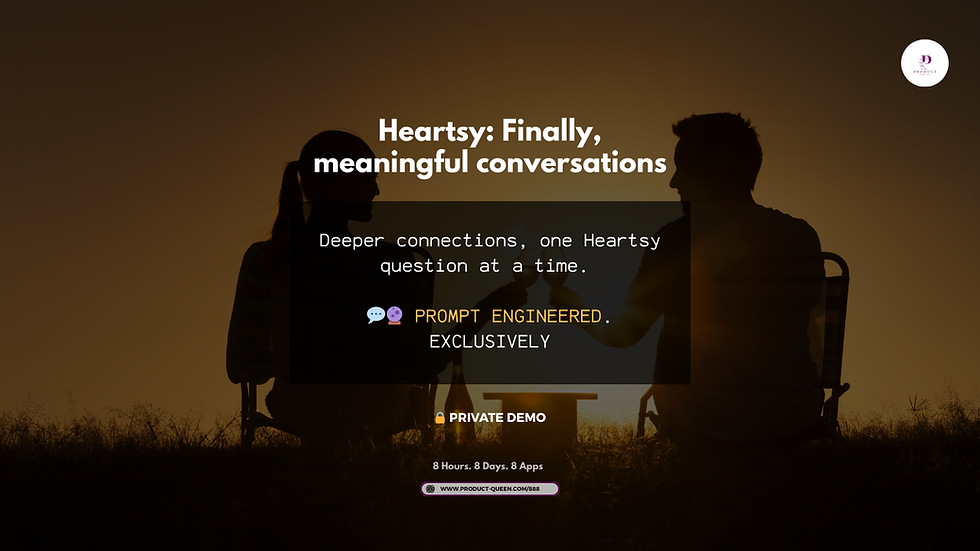🧠 Built with AI: Manage Multiple Airbnbs Seamlessly | 888 Day 1
- Cindy Adem

- May 14
- 4 min read
Updated: Jun 18
Rapid Prototype for Short-Let Hosts with Multiple Units

Day 1 of my "8 Hours, 8 Days, 8 Products" challenge was equal parts ambition, reality check, and rapid iteration.
The goal? Build a functioning AI-powered tool in just 8 hours.The result? A multi-property rental dashboard for short-let hosts like me who manage listings across Airbnb, Booking.com, and other platforms.
But let’s be honest: This one took closer to 12 hours — and even then, a lot of things broke.
🛠️ What I Built (in ~8 hours)
By the 8-hour mark, I had a skeleton demo with:
A somewhat responsive UI built with React, TypeScript, and Tailwind CSS
Dashboards for listings, bookings, financials, and staff
A calendar view with (mock) booking data
A PostgreSQL database connected for some modules
Sounds solid — but under the hood, it was rough.
The Financials tab crashed the app. The currency was hardcoded in KES with no way to switch. The calendar and booking views were out of sync, since much of the data still came from Replit-generated mock data. Many buttons and links didn’t work at all — and several screens had no connection to the actual database.
Replit did generate a compelling UI quickly, but the modules weren’t talking to each other.
The skeleton was there — but the internals were disconnected.
Check this out: 1 Hour in
8 Hours in:
🔧 What I Fixed After the Sprint
Post-sprint, I took the time to:
Clean up the UI and correct broken layouts
Sync modules to the live database
Replace mock data with real inputs
Debug links and buttons
Refactor the navigation and conditional logic
With those fixes, the dashboard became a usable prototype — one I can actually demo.
💥 Replit: Fast but Flawed
Replit drastically reduced setup time. The in-browser environment let me build, test, and debug without switching tools. But there were moments it really missed the mark:
Replit misread screenshots I uploaded and introduced UI-breaking code
When asked if the new UI was working, it confidently praised its own broken output
It repeatedly reverted to mock data even when a real database was connected
Debugging database queries in-browser was tough due to limited visibility into logs
The tool is powerful, but it sometimes overestimates its accuracy — and still needs tight human oversight.
Check the first conversation between Replit and I, and see the screenshot of the terrible UI update it gave me. Then see the inspo I gave Replit for minimalistic design. The hallucination is wild.



🧠 Lessons & What I’d Do Differently
If I could restart, I'd begin with:
Mock data first to get the UX right
Separate logic from visuals to avoid circular bugs
Strict focus on core flows, especially data syncing between modules
Manual UI decisions where precision matters (Replit’s confident guesses aren’t always correct)
I also learned not to chase perfection during the sprint — but to document everything I’d fix after.
🚀 From Demo to Real Product
To turn this into a real product, I’d need to add:
Authentication and role-based access for teams
Direct API integrations with Airbnb/Booking.com
Stripe or Paystack integration for payment tracking
Real-time notifications and task automation
Robust financial reporting + tax views
Push-to-call from the app (not Skype)
A unified source of truth across all views
And, of course, more thoughtful visual hierarchy across screens.
🌍 Big Picture: The New Workday
This sprint reminded me how radically software development has shifted.
With modern frameworks, cloud platforms, and AI tooling, a single person can ship complex prototypes in a day — but only if they bring clear thinking, product sense, and a ruthless ability to prioritize.
It’s not about writing perfect code. It’s about orchestrating imperfect tools into useful products — fast.
This wasn’t perfect. But it was real. And I’m proud of where Day 1 landed.
🔥 What is 888?
8 Hours. 8 Days. 8 Products. A personal challenge to build 8 functional AI-powered tools in 8 consecutive days — dedicating just ~8 hours to each build.
This is not about perfection — it’s about speed, creativity, and clarity of product thinking.
Every project is an exploration: solving real problems, testing ideas fast, and documenting the build process openly.
📌 How to Follow the Flow
Each day, I’ll share:
A short demo video
A concise build recap post (on LinkedIn & Twitter)
A full write-up in comments or blog (with lessons, tech stack, and what worked/didn’t)
And once ready, a live link to the deployed product (or prototype status if not yet deployed)
Give me your email and I'll send you daily updates or connect with me on socials to stay updated daily.



Comments